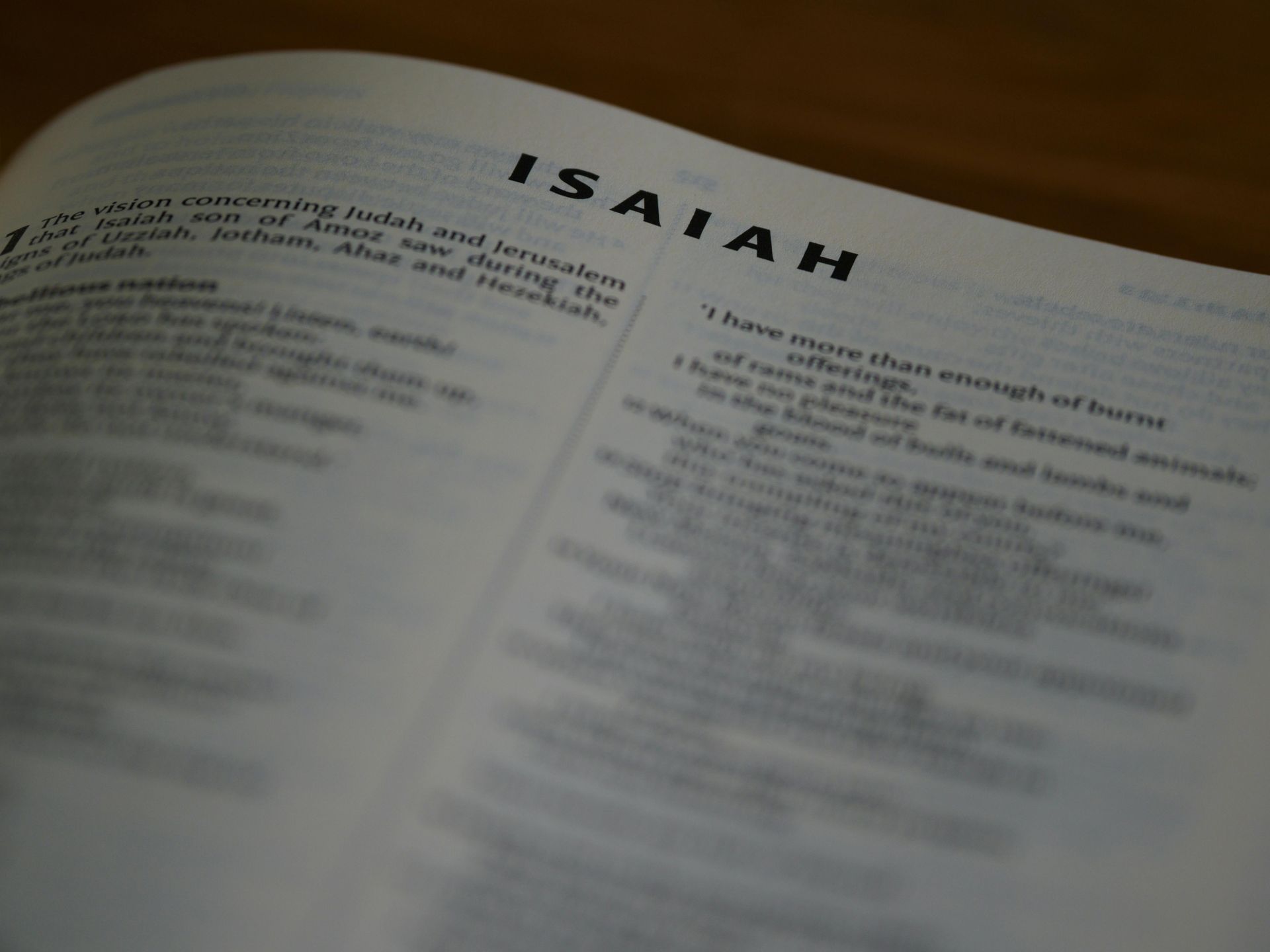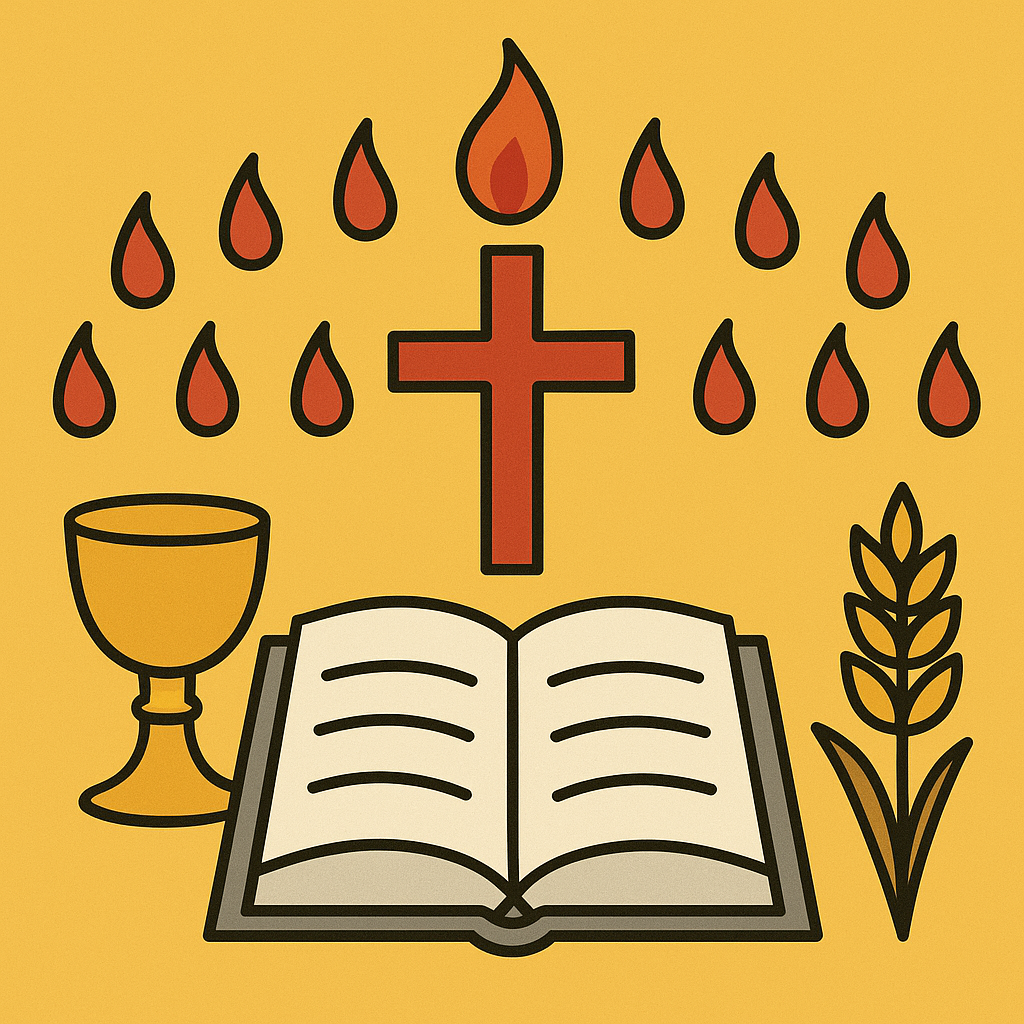Introduction to Leviticus
As we studied Exodus, the main character was Moses. In this book, Leviticus, the main “character” is one of the tribes of Israel, the tribe of Levi. You might recall that Jacob, whose name was changed to Israel, had twelve sons. Among them were Reuben, Simeon, Judah, Joseph, Dan and Levi. Levi and his tribe were singled out among the other tribes to serve the nation in a special way. They were not going to be farmers or herdsman, carpenters or stoneworkers. They were going to “go into the ministry,” serving as priests and “Bible teachers” throughout the nation of Israel.
How was it that this tribe and not any of the others was singled out for this service? "The Levites shall be for Me" (Numbers 18:14), indicating that special relationship with the tribe of Levi.
Two incidents come to mind. In Gen. 49:6-7 it says this about both Simeon and Levi, “their swords are weapons of violence. . . . for they have killed men in their anger . . . cursed be their anger! I will scatter them in Jacob and disperse them in Israel.”
What was that all about? Back in Genesis 34, you might recall the incident where one of Jacob’s daughters, Dinah, had been “defiled” by a non-Israelite named Shechem who wanted to marry her. The brothers of Dinah agreed only if the non-Israelites got circumcised. They agreed and while they were healing, Levi and Simeon attacked and killed all of them.
In another incident, four generation later, we had the Golden Calf incident described in Exodus 32. It was the Levites who stood with Moses and opposed those who worshipped the Golden Calf.
Because they were “hot tempered” but also very pious, God thought that rather than giving them a piece of land where they might cause trouble with their neighboring tribes, He would scatter them to 42 cities through Israel (to keep them out of trouble) and because of their passion for God, they could be used for teaching the Law and serving in the temple. In these cities, the Levites served as spiritual teachers to the people of Israel. These cities also served as shelters for those guilty of accidentally causing a person's death. Whereas the other tribes worked the land, the Levite were dependent on the tithes and food gifts of others. Levites were made to be economically dependent on others for their income.
Much as in a hospital, a small number of people are involved in direct patient care, there are many others who offer support. Be it a hospital or a temple, a lot of people are involved in providing ministry to the people.
- Human Resources: Levites who came in from the field to perform their duty in the temple had to be scheduled and trained. Housing, meals and transportation have to be provided.
- Entertainment: they were musicians of the temple.
- Priestly Assistants: they assisted the priests in preparing the offerings and in other aspects of the Temple's functioning.
- Facilities Management: they were probably responsible for the maintenance and repair of the temple. Roof will leak, plumbing issues arise, especially when you have all that waste from the animals sacrifices. Then you also have odor control so as not to annoy the residents living nearby.
- Housekeeping: Keeping the facility clean, disposing of ashes from sacrifices, laundry services to clean, repair and tailor the uniforms for the priests. Cleaning out the altars and the grills. Curtains around the tabernacle have to be inspected and repaired, along with the poles.
- Equipment Maintenance and Repair: Utensils must be sharpened, repaired, inspected for unserviceability.
- Supplies: Oil for the candle sticks, wood for the fires, water for the washing and clean up. Linens for towels.
- Security: Grain that has been tithed and is stored needs to be inventoried and secured requiring accountants and security personnel. All equipment, especially those made of gold, must be inventoried, and secured. They were the gatekeepers and honor guards.
The priests can’t do all of these tasks any more than a pastor of a church can care for the lawn, landscaping, housekeeping, facilities repairs, accounting, etc. This is where the Levites come in. And when they are not working in the tabernacle/temple, they are scattered among 42 cities throughout Israel and are teaching or assisting the teachers of the Law.
Levites were exempt from general military service. The service of the Levite is the service of the spirit. Thus, the tribe originally chastised for its warlike behavior became the tribe which exemplified peace. With their violent disposition, if they had gone to war, would more likely commit war crimes. If they had their own territory, they might be more aggressive towards their neighboring tribes.
Now, let’s take a look at the book itself. Leviticus means, “relating to the Levites.” Much of the book contains laws on how to perform the required rituals in the temple. In the military we have a manual that deals with drill and ceremonies. It provides the script and choreography for ceremonies such as the familiar reveille where the flag is raised in the morning and retreat, where it is lowered in the evening.
Here is what these rituals look like.
The Passover Seder is also scripted and choreographed. The head of the family simply reads from the Haggadah, which includes the prayers, readings and images of a properly set table. The Haggadah was their version of Passover for Dummies.

The Catholic Church has a manual, entitled, Ceremonies of the Modern Roman Rite. It’s 850-pages. Why so many pages? Well, rituals tend to grow in number and complexity over time.
The fixed routines of rituals prevent us from being disorientated or distracted if the pastor started to improvise and get “creative” during communion. It also allows the members to focus on the meaning of the rituals, rather than thinking, “What do I do next?” “I hope I don’t mess up this ceremony, again.”
The Apostle Paul taught that there should be order in the church service rather than chaos. In I Cor 14:40 that, “But everything should be done in a fitting and orderly way.” And so it is with the tabernacle and temple services found in the Book of Leviticus.
Some of the practices in this book appear shocking or confusing to us today. Just imagine if your pastor began the worship service by walking down the center isle towards the pulpit with a goat on a leash. When we get to the pulpit he turns to the congregation, reaches for a knife and slashed the goats’ throat. I won’t go any further with the description, but you can just imagine the children in the front row with eyes as large as saucers staring in disbelief.
Some may have screamed, and others started to cry. Everyone in the church is stunned and confused, some leave as quickly as they can with handkerchiefs covering their noses, thinking to themselves, “My word, the Pastor has had some kind of nervous breakdown or something. Somebody call 911.”
As we read this book, let’s try to look at the rituals and laws through the eyes of people in that culture, in that time. Circumcision, animal sacrifices, sprinkling blood on an altar, were not shocking requirements, back in that day. The pagan gods had their temples and priest. The temple of Baal-Berith, the god of fertility, is mentioned in Judges 9:4, The temple to Dagon, a god of prosperity, is mentioned in I Sam. 5:2. His temple was the one destroyed by Samson. And the Temple to Ashtoreth, the moon goddess, is mentioned in I Sam 31:10.
The Israelites probably thought that the animal sacrifices were rather tame by comparison with other religions. “Well, at least we don’t have to sacrifice our children.”
We know that some larger churches have coffee shops and bookstores in their lobby, which would puzzle the ancient Israelites. Though they wouldn’t be puzzled to find a meat market and granary at their temples.
You might ask yourself, “What was the purpose of some of these laws? Why couldn’t the Israelites eat pork or clip the edges of their beards?” Leviticus 11:44 says, “I am the Lord your God; consecrate yourselves and be holy, because I am holy.” This expression is repeated throughout the book. God wanted the Israelites to live differently than their neighbors. They were “set aside” as His chosen people. He wanted them to dress, eat, worship, etc. differently than others. And by having a different lifestyle from that of your neighbors, it would tend to diminish interaction with them at the social level and prevent the Israelites from taking on some of their neighbors’ practices, such as worshipping pagan gods.
Other laws are simply civil laws to maintain order in the new nation. For instance, “Do not do anything that endangers your neighbor’s life.” “Don’t murder or steal from others.” These civil laws make sense, otherwise you have anarchy with the stronger members taking advantage of the weaker of society.
The sacrifices, along with the laws showed to the Israelites their sinfulness and their need for forgiveness. It directs them to God. The animals that were sacrificed were to be without blemish. In other words, you can’t bring to the temple an infected, blind, emaciated goat to be sacrifices. The sacrifice had to cost the individual money to impress upon him that sin was a serious matter, and its removal was costly. Not only that, but the individual had to do the actual killing of the animal before the priest stepped in to take the blood and apply it to various places. It’s sort of like getting an expensive speeding ticket to impress upon you the seriousness of the traffic violation. In some countries the fine that one pays is based on your income. The fine has to hurt to have an effect.
We needn’t get too involved in the study of the sacrifices since we won’t have to perform them in church next week. This is because these sacrifices foreshadowed the ultimate sacrifice that Christ made, once and for all. Heb. 10:10, 14, “And by that, we have been made holy through the sacrifice of the body of Jesus Christ once for all . . . By one sacrifice he (Christ) has made perfect forever those who are being made holy.”
The Israelites were told what to eat and what to avoid eating, how to worship God, what clothing to wear and so on. The rules were meant to resist assimilation. This reminds me of the Amish communities in Pennsylvania, Ohio and Indiana. Their religion is not just a set of theological beliefs. The Amish life is a way of life. In Acts 9:21, 19:9 and 19:23, early Christians were known as members of the Way. Their beliefs impacted all areas of their lives. It was a way of life.
The Amish are known for their simple way of life, plain clothes, pacifism and slowness to adopt many modern technologies since these things tend to interrupt family time. The Amish value rural life, manual labor, and humility.
The Amish believe large families are a blessing from God. They only marry another Amish. They worship in homes which is followed by a fellowship meal.
Their clothing is modest and plain and should not call attention to the wearer by cut, color, or any other feature. Men typically wear dark-colored trousers, some with a dark vest or coat, suspenders (in some communities), broad-brimmed straw hats in the warmer months, and black felt hats in the colder months. Married men and those over forty grow a beard. Mustaches are forbidden because they are associated with European military officers and militarism in general. They don’t own automobiles, but they will ride in them. Their preferred mode of transportation is the horse and buggy. The Amish, like the Israelites, live a distinct lifestyle which reduces the assimilation of them into the surrounding culture. Here is a video of the Amish to help you understand them and why God gave the Israelites His laws (Torah) or as the Amish would call their book of Laws, the “Ordnund,” to keep them holy as He is holy.
The rituals then, like those practiced today, can draw people closer to God and solidify communal bonds. Some laws make for an orderly society. Some laws found in the Book of Leviticus don’t seem to make much sense, other than making the Israelites “different” from others.
Keep these points in mind as we go through this book. These sacrifices were given to the Israelites, and they were temporary, until the Messiah came. Some of these laws, designed to prevent assimilation with society are also obsolete. The church is not to remain isolated from the world, but “go into all the world,” having a positive influence in the world, being light and salt.
Christians needn’t rely on uniformity of clothing or jewelry that we might wear to be recognized as Christians. It’s better to be recognized by the fruit of our lives. Jesus taught in Matt 7:20 “Thus, by their fruit you will recognize them.” What fruit is he referring to? The fruit that we should be producing is found in Gal 5:22-23, “the fruit of the Spirit is love, joy, peace, patience, kindness, goodness, faith, gentleness, and self-control.”
Recent Articles
Share this:
Start Here...
Why Study the Bible?
Don’t many consider the Bible to be just a book of myths? Why do we read the Bible rather than the sacred literature of other religions?
How do we know that it is from God? How do we know that what we have today is an accurate translation from the original? Is the Bible complete or have there been some books that have been lost?
We should be able to answer these questions, and there are answers! So start here!
Answers to Common Bible Questions





